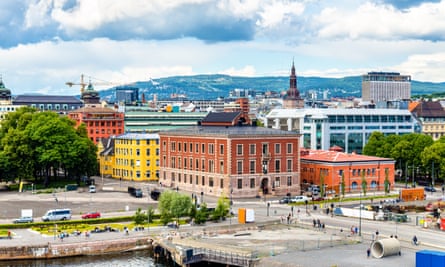Imagine a capital city where nobody has to die on the roads. It may sound almost impossible, but last year not a single pedestrian, cyclist or child lost their life on the streets of Norway’s capital, Oslo; the only fatality recorded was a motorist crashing into a fence. (By comparison 12 people were killed in Bristol, a city slightly smaller than Oslo, in 2017 – and over half of them were pedestrians or cyclists.)
The catch? The lives saved in Norway seem to have been a byproduct of a bigger plan to become a carbon-neutral city that would probably spark a mutiny if you tried it here. Oslo has closed some streets to traffic entirely, removed parking spaces across the city to deter drivers, introduced measures to stop parents doing the school run by car and reduced speed limits. There’s plentiful public transport and lots of bike lanes but the bottom line is, as Oslo’s mayor says, that while cities will always have traffic, “the drivers should act as guests”. And not very welcome guests, by the sound of it.
Something like this would probably be the future for British cities, if we were serious about dealing with the air pollution filling urban children’s lungs, as well as tackling the climate crisis. This week, Birmingham announced proposals to stop people driving across the city centre, amid research suggesting that illegal levels of air pollution may be shortening the lives of children growing up in the city by up to half a year. Cars will be allowed into a new clean-air zone, but not through it to reach other parts of the city, forcing them out around the ring road, or otherwise encouraging drivers on to the bus.

It’s following in the footsteps of other cities, including Bristol, which unveiled proposals last autumn to ban diesel cars from parts of the city in daytime, and Oxford, which this week published plans for a zero-emission zone in the centre with a £10 charge for non-compliant vehicles. Suddenly you can imagine a time when driving into a smog-laden city, in all but the greenest cars and for all but the most essential journeys, will feel as antisocial as smoking on the bus.
But there’s bound to be a backlash, as there was in Oslo initially, and sometimes for reasons that aren’t so easy to dismiss. In Bristol there have been awkward questions about whether a ban would be fair on sick and frail people trying to reach hospitals inside the zone. Keeping polluting cars out of town, but letting drivers of new electric ones go where they like, meanwhile, hurts poorer families who can’t afford to replace their old car.
It would be wholly unfair for ministers either to sit back and let local councils bear the brunt of motorists’ anger over all of this when they’re responding to national imperatives (Birmingham is one of five cities asked by central government to introduce clean air zones after a court ruling that Britain was breaching EU air pollution limits) or to expect this to work without serious improvements to public transport. We’re overdue an honest national conversation about how to do this fairly – and national politicians should summon the nerve to lead it from the front.
Nobody drives in a city for the thrill of the open road, to put it mildly. There’s nothing fun about stewing in bumper-to-bumper traffic, and while sometimes drivers do it out of laziness, more often it’s just because it works; because it would be lovely if everyone cycled Nordic-style to school with the kids, stopping en route for cinnamon rolls and neighbourly conversation, but sometimes life isn’t like that. Sometimes stuffing the children into the car is the only way to manage school and nursery runs in two different directions, plus getting to work on time, plus grabbing a supermarket shop on the way home – because too many Britons live frantic lives with no slack in the day and dismal public transport options.
If you want people to drive less then you have to organise society in a way that makes that bearable, and that’s ultimately a job for central governments. It’s time national politicians stopped being backseat drivers here, and took the wheel.
Gaby Hinsliff is a Guardian columnist

